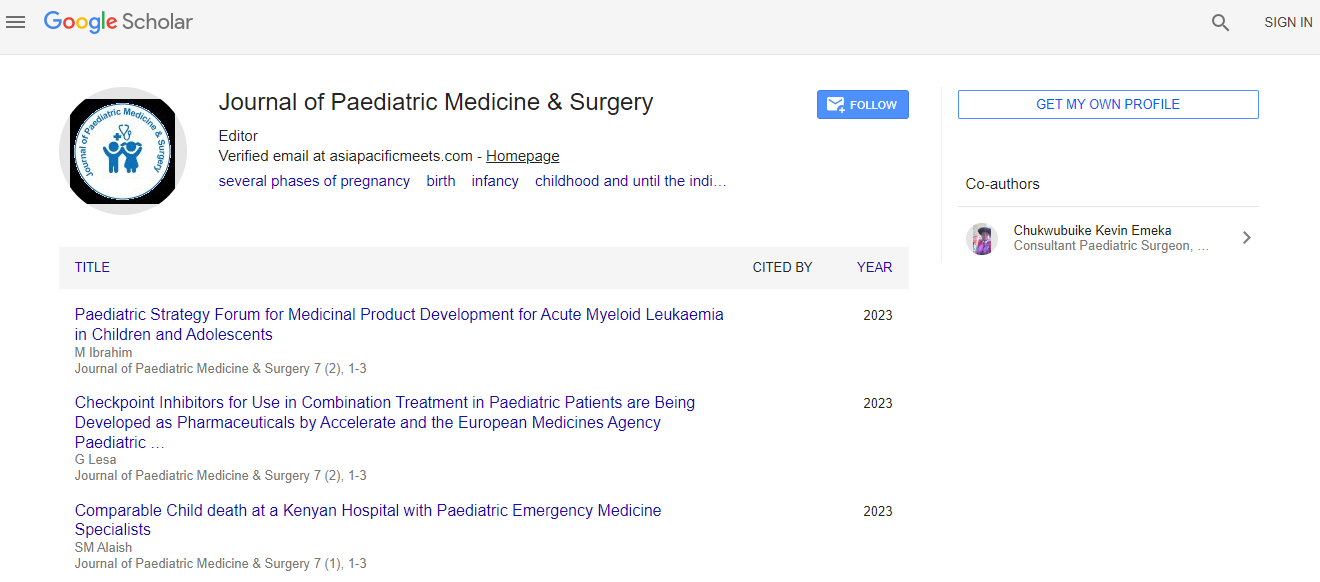Medical Informatics and Pediatrics Health 2019: Bone health in relation to vitamin-D status and serum adipokines in obese Egyptian children - Maged A El Wakee - National Research Centre
*Corresponding Author:
Copyright: © 2019 . This is an open-access article distributed under the terms of the Creative Commons Attribution License, which permits unrestricted use, distribution, and reproduction in any medium, provided the original author and source are credited.
Abstract
Infantile obesity has been related to a rise in fracture threat, so the impact of obesity on bone metabolism is becoming a focus of attention to identify factors that may affect bone health in obese children. This study aimed to examine the association between serum 25-Hydroxy vitamin D [25(OH) D], adipocytes and bone status in those children
Method: 100 obese and 80 non-obese age and sex matched children were enrolled in our study with mean age of (9.7±2.3) and (8.9±1.5) respectively. Anthropometric measurements, femoral neck bone mineral density (BMD) and its Z-score, bone mineral content (BMC) were measured using dual-energy X-ray absorptiometry (DXA) in relation to body weight (kg), IR was calculated to assess insulin resistance.
Results: It was found that BMC, BMD and BMD Z-score adjusted for weight were significantly lower in obese children as compared to controls (all p<0.05). Obese children had lower levels of 25(OH) D and adiponectin (P<0.01), while higher levels of leptin, total cholesterol (TC) and triglycerides (TG) compared to controls (P<0.01). Both BMC and BMD Z-score showed positive association with 25(OH) D and adiponectin (P<0.01) and -Ve association with HOMA-IR, TG and TC (P<0.05). Linear regression analysis showed that 25(OH) D was the most effective factor predicting BMD Z-score and BMC in obese children. Therefore, this study aimed to examine the association between serum 25-Hydroxy vitamin D [25(OH) D], adipocytes and bone status in obese children. This case control study was executed in the Child Health Clinic in Medical and Scientific Centre of Excellence, National Research Centre (NRC), 100 obese and 80 non-obese age- and sex-matched children were enrolled in our study with mean age of (10.12±2.34 & 9.62±1.67 years) respectively. Anthropometric measurements, femoral neck bone mineral density (BMD) and its Z-score, bone mineral content (BMC) were measured using dual-energy X-ray absorptiometry (DXA) in relation to body weight (kg), we also determined serum 25(OH) D, adiponectin, leptin and lipid profile. HOMA-IR was calculated to assess insulin resistance. It was found that BMC and BMD Z-score adjusted for weight were significantly lower in obese children as compared to controls (all p<0.05). Obese children had lower levels of 25(OH) D and adiponectin (P<0.01), while higher levels of leptin, total cholesterol (TC) and triglycerides (TG) compared to controls (P<0.01). Both BMC and BMD Z-score showed positive association with 25(OH) D and adiponectin (P<0.01) and negative association with HOMA-IR, TG and TC (P<0.05). Linear regression analysis showed that 25(OH) D was the most effective factor predicting BMD Z-score and BMC in obese children. It is concluded that, obesity is negatively related to bone health in childhood. Those obese children are at increased risk for vitamin D insufficiency, which shows an obvious relationship to lower bone mass, raising the question of supplementation to prevent the deleterious effect of its deficiency on bones and reducing future risk of fracture and osteoporosis.
Conclusion: Obesity is negatively related to bone health in childhood. Those obese children are at increased risk for vitamin D insufficiency which shows an obvious relationship to lower bone mass, raising the question of supplementation to prevent the deleterious effect of its deficiency on bones and reducing future risk of fracture and osteoporosis.
Background: Multiple reports suggested the vital role of vitamin D in immune system function and regulation since 1, 25 dihydroxy vitamin D can promote the innate immature response to the pathogen. We aim in this study to evaluate serum vitamin D concentrations among neonates with pneumonia.
Methods: This case-control study enrolled 33 neonates with pneumonia in addition to 30 healthy controls. CBC, CRP, Serum vitamin D and Entrain 3 levels were measured for all participants.
Results: There was significant difference between patients and controls regarding Hemoglobin levels, TLC and CRP (p value < 0.01, = 0.002, < 0.01 respectively). Patients with pneumonia showed significant lower levels of Vit. D (9 ± 2.1) compared to controls (14.1 ± 2.8), P value < 0.01. However, patient group had significant higher levels of Pentraxin 3 (29.1 ± 4.8) compared with controls (12.6 ± 3), P value < 0.01. Moreover, mechanically ventilated patients revealed significant lower vit D (7.7 ± 1.8) and higher pentraxin 3 (32.2 ± 2.6) compared to patients on free oxygen (9.1 ± 2.1, 26.4 ± 3.7 respectively), P value = 0.05, 0.02 respectively. Regarding hospital stay, it had significant positive correlation with serum pentraxin 3 (r = 0.6, P value < 0.01) and significant negative correlation with serum vitamin D (r = -0.4, P value = 0.04). Finally a significant negative correlation between serum levels of vitamin D and Pentraxin 3 was found (r = -0.4, P value = 0.01).
Conclusion: Lower concentration of serum vitamin D may be significantly associated with neonatal pneumonia. It also can predict the need for mechanical ventilation and duration of hospital stay in neonatal pneumonia. Similarly, higher levels of Pentraxin 3 may be used as an indicator for mechanical ventilation need and a longer hospital stay in neonates with pneumonia

 Spanish
Spanish  Chinese
Chinese  Russian
Russian  German
German  French
French  Japanese
Japanese  Portuguese
Portuguese  Hindi
Hindi 